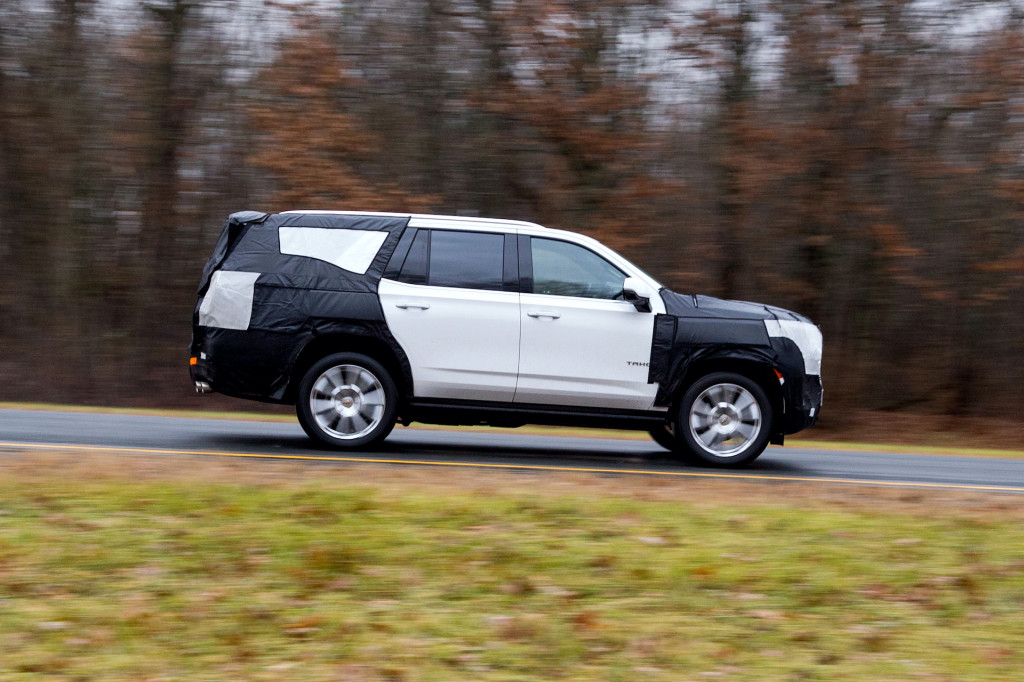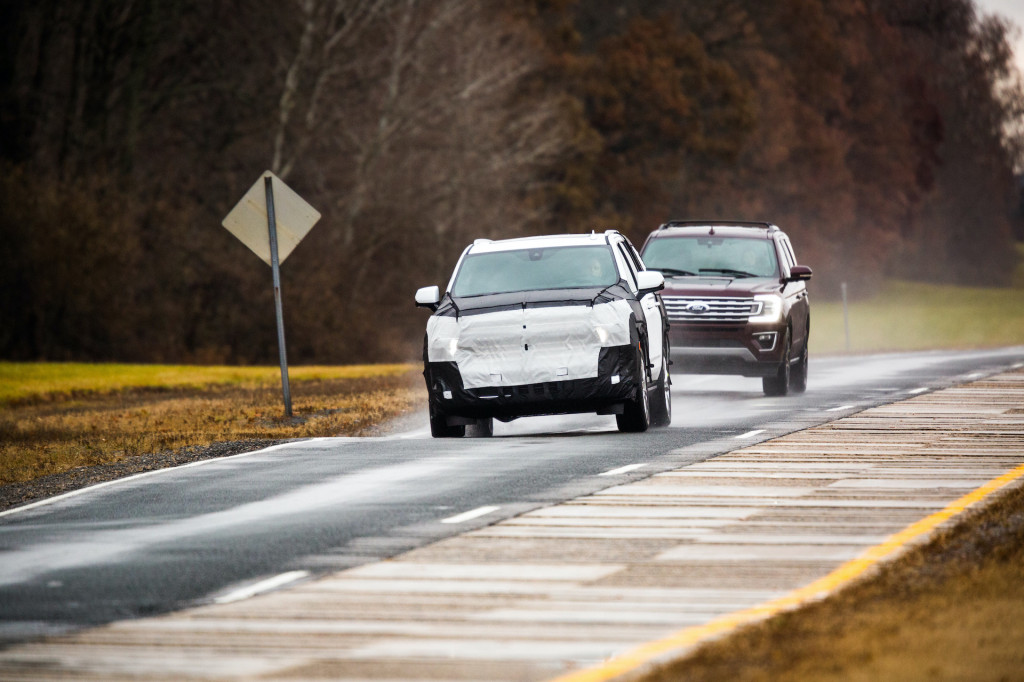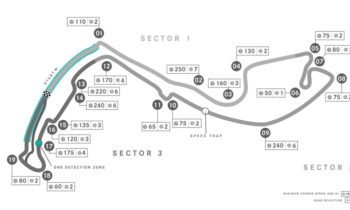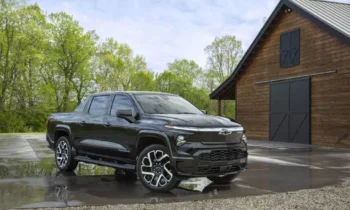After more than three decades on the market, the Chevrolet Tahoe has received an independent rear suspension.
On Tuesday night in Detroit, the 2021 Chevrolet Tahoe and its larger sibling, the Suburban were unveiled with the latest infotainment technology, an available turbodiesel powertrain, and most importantly, a modern suspension.
Prior to the reveal, I was granted some seat time in a pre-production 2021 Chevrolet Tahoe prototype at GM’s Milford Proving Grounds to experience the big SUV’s on-road dynamics against its direct rival, the 2020 Ford Expedition. Chevy’s goal was to demonstrate how much more composed, comfortable, and controlled the Bowtie’s offering is than the Blue Oval’s. The difference was staggering.

2021 Chevrolet Tahoe and Ford Expedition, GM’s Milford Proving Grounds
Ride and handling
I first slid into the second-row passenger side seat of a Burgundy Ford Expedition Limited piloted by a GM engineer who introduced himself only as Guy. Over small cracks in the road and simulated expansion joints, the Expedition’s independent rear suspension soaked up the imperfections without issue, but when the big people mover encountered large bumps and dips affecting only the left side of the vehicle, it tossed me like a salad while going just under 60 mph. As we rounded a bumpy corner, the rear end danced as it tried to maintain control. It felt like it wanted to skip across the pavement and barely hung on.

2021 Chevrolet Tahoe and Ford Expedition, GM’s Milford Proving Grounds
Next, I slid into the rear second-row passenger seat of a white 2021 Chevrolet Tahoe High Country (the glitzy model). The front and rear bumpers were covered in camouflage and the interior was completely hidden beneath black cloth. This Tahoe was optioned with the fourth-generation magnetic dampers and four-corner air suspension. Our driver, Bryan, said we would go around the same loop twice, once at the same speed as in the Expedition (just below 60 mph) in the default suspension mode that is biased toward comfort and then again at a quicker pace with the suspension in Sport mode.
In both modes the Tahoe handled the small cracks and simulated expansion joints much like the Expedition. However, the difference was night and day when it came time to tackle the large bumps and dips affecting only the left side of the vehicle. Jostling was minimal and the ride was far more controlled and comfortable. If the Expedition was the baseline, then the Tahoe performed some physics-defying black magic over this section of the road. Around the bumpy corner where the Expedition’s rear end danced, the Tahoe remained much more poised.

2021 Chevrolet Tahoe and Ford Expedition, GM’s Milford Proving Grounds
For the second lap, with the air suspension and magnetic dampers in Sport mode, Bryan put his foot into the throttle and we approached 70 mph. The ride was noticeably firmer, but the suspension still never became unsettled. Over the undulations that affected only the left side of the vehicle, the large SUV remained composed and never tossed me around. More impressive was how Bryan was able to attack the bumpy corner at just over 72 mph. This time he took a racing line, and I could feel air suspension and dampers working to counteract the Tahoe’s considerable mass.
Seat space and functionality
The front and rear seats in the 2021 Tahoe are narrower and firmer than the wide, soft, cushy thrones in the Expedition, but the Tahoe’s seat bottoms are too short to offer thigh support to long-legged occupants. The Tahoe’s front seat does have adjustable lumbar support, though, so drivers’ backs shouldn’t suffer.
The second-row seat slides fore and aft, so second- and third-row occupants can horse trade for leg room. Like the fronts, the second-row seats have short seat bottoms, but their design gives them more lumbar support. While both the second and third rows fold flat for cargo hauling, the Tahoe’s second-row seat can’t slide and tumble forward like the Expedition’s second row when a car seat is locked in place. That makes it harder to get into the third row when child seats are in place in the second row.
My total seat time in both vehicles covered only a few minutes, not hours, but this first encounter was enough to make it clear that the 2021 Tahoe’s switch to an independent rear suspension was a smart call. Combined with the available magnetic dampers and four-corner air suspension, it makes the Tahoe a smooth operator that can almost defy physics and shame the competition on a handling course.
Stay tuned for further impressions as we get closer to the launch of the 2021 Chevrolet Tahoe and Suburban next summer.



